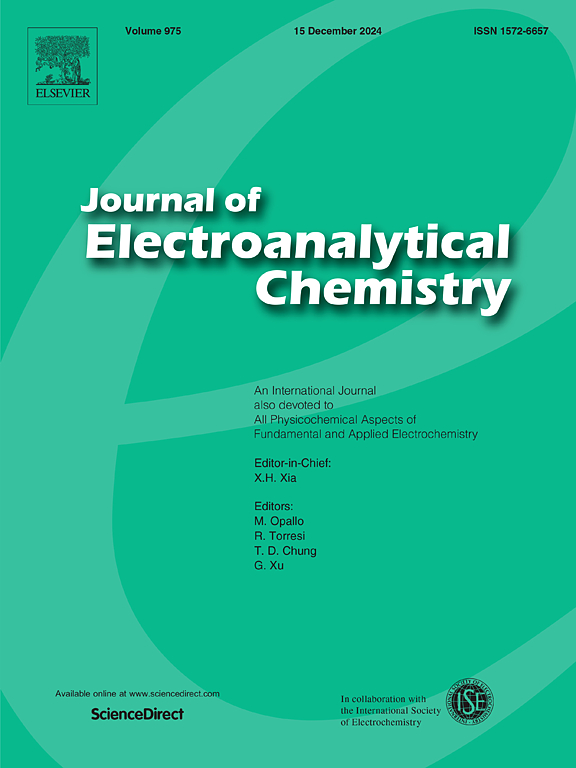Platinum/Stainless-Steel mesh electrode fabrication via Chemically thermal reduction for efficient hydrogen evolution reaction
IF 4.1
3区 化学
Q1 CHEMISTRY, ANALYTICAL
引用次数: 0
Abstract
Platinum-based electrodes continue to be extensively studied, with a key focus on decreasing their cost. This research addresses this challenge by depositing platinum (Pt) nanoparticles onto a cost-effective stainless steel mesh (SSM) substrate for the hydrogen evolution reaction (HER). Pt nanoparticles were deposited on SSM (Pt/SSM) using a simple chemical thermal reduction method. The effects of varying the concentration of the K2PtCl4 precursor on Pt deposition and catalytic performance were investigated. Results showed that higher precursor concentrations led to increased Pt loading and improved HER activity, although the loading remained lower than that of commercial electrodes (0.011 mg/cm2). The optimized Pt/SSM, prepared with a 2 mM K2PtCl4 solution, achieved a low overpotential of 101 mV and a Tafel slope of 53 mV/decade in 0.5 M H2SO4, with excellent stability. These findings highlight the potential of Pt/SSM electrocatalysts for efficient hydrogen production and emphasize the importance of electrolyte conditions in optimizing performance.
通过化学热还原法制造铂/不锈钢网电极,实现高效氢进化反应
对铂基电极的研究仍在继续,重点是降低其成本。本研究通过将铂 (Pt) 纳米粒子沉积到成本低廉的不锈钢网 (SSM) 基质上,用于氢进化反应 (HER),解决了这一难题。采用简单的化学热还原法将铂纳米粒子沉积在 SSM(Pt/SSM)上。研究了不同浓度的 K2PtCl4 前驱体对铂沉积和催化性能的影响。结果表明,前驱体浓度越高,铂负载量越大,HER 活性越高,但负载量仍低于商用电极(0.011 mg/cm2)。使用 2 mM K2PtCl4 溶液制备的优化 Pt/SSM 在 0.5 M H2SO4 中实现了 101 mV 的低过电位和 53 mV/decade 的塔菲尔斜率,且稳定性极佳。这些发现凸显了 Pt/SSM 电催化剂在高效制氢方面的潜力,并强调了电解质条件在优化性能方面的重要性。
本文章由计算机程序翻译,如有差异,请以英文原文为准。
求助全文
约1分钟内获得全文
求助全文
来源期刊
CiteScore
7.80
自引率
6.70%
发文量
912
审稿时长
2.4 months
期刊介绍:
The Journal of Electroanalytical Chemistry is the foremost international journal devoted to the interdisciplinary subject of electrochemistry in all its aspects, theoretical as well as applied.
Electrochemistry is a wide ranging area that is in a state of continuous evolution. Rather than compiling a long list of topics covered by the Journal, the editors would like to draw particular attention to the key issues of novelty, topicality and quality. Papers should present new and interesting electrochemical science in a way that is accessible to the reader. The presentation and discussion should be at a level that is consistent with the international status of the Journal. Reports describing the application of well-established techniques to problems that are essentially technical will not be accepted. Similarly, papers that report observations but fail to provide adequate interpretation will be rejected by the Editors. Papers dealing with technical electrochemistry should be submitted to other specialist journals unless the authors can show that their work provides substantially new insights into electrochemical processes.

 求助内容:
求助内容: 应助结果提醒方式:
应助结果提醒方式:


